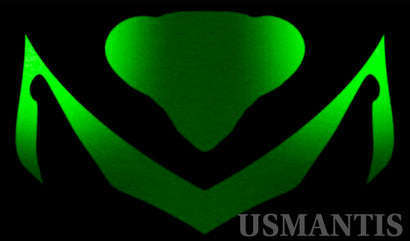History of Entomology and Its Founders
The Founders of Entomology and Nematology
Entomology and nematology are sciences devoted to the study of insects and nematodes: creatures as fascinating as they are impactful on agriculture and natural systems. Although entomology and nematology are now fully formed sciences supporting the $1.053-trillion-dollar agriculture industry, that wasn’t always the case. From a reverend who saw the divine in nature to a housewife who trekked through the jungles of South America, the founders of these sciences were passionate learners who questioned the world around them and searched tirelessly for answers.
At the University of Florida, we offer online entomology and nematology programs where students can follow in the footsteps of some of the world’s foremost scientists. If you have a love for nature and the ants, bees, beetles, and wasps inhabiting it, apply to one of our master’s degree or graduate certificate programs. A career working directly with insects can be as exciting as it was for these scientists hundreds of years ago.
Maria Sibylla Merian (1647-1717)
Maria Sibylla Merian wasn’t always known as the mother of entomology. Born in the Netherlands in 1647, Merian spent her early years as a homemaker for her husband and daughters. However, a childhood love of insects blossomed into a fascination with caterpillars, especially with their metamorphosis into butterflies. Having come from a family of artists, Merian was able to use her drawing talents to capture the life stages of insects, from larva to pupa to adult, in a way that had never before been documented. The common belief held during Merian’s time was one of “spontaneous generation,” the idea that insects and other living creatures spontaneously emerged from dew, dung and mud, which had its origins in a theory first outlined by the Greek philosopher Aristotle.
Over the course of her life, Merian published a series of books containing drawings and engravings dispelling the notion of spontaneous generation and showing the natural world in magnificent detail. One of her most important publications, “Metamorphosis Insectorum Surinamensium,” resulted from her ambitious expedition at the age of 52 to the jungles of South America. While her contemporaries were focused on separating and classifying insects, Merian was a trendsetter who didn’t shy away from showing ants, caterpillars and tarantulas as they appear in nature.
William Kirby (1759-1850)
Known as the father of entomology, Reverend William Kirby graduated from Caius College in Cambridge, England, in 1781 and was ordained a year later. He spent the next 68 years of his life living just 2.5 miles from his birthplace in Suffolk. This somewhat isolated life afforded the opportunity to connect with local scholars and scientists and learn about the surrounding plants, animals and insects in great detail. Over the course of his life, Kirby helped found the Entomological Society of London, became President of the Ipswich Museum and is associated with founding the Linnean Society, but his greatest contribution to the field of entomology came between 1815 and 1826. Together with friend William Spence, Kirby produced “An Introduction to Entomology, or Elements of the Natural History of Insects,” four volumes that would become the foundational text for modern entomology.
Unlike Merian, Kirby was concerned with a systemic approach to the classification of insects. Kirby identified genus and species not only by an insect’s appearance but also its behavior, such as the mason wasp’s tendency to enclose living caterpillars in cells with their eggs. Like Merian, Kirby approached entomology with a sense of wonderment. Although Kirby’s work emphasized natural theology, his belief that there is “delight in nature” is alive and well in the field of entomology.
Nathan Augustus Cobb (1859-1932)
Nathan Cobb, considered to be the father of nematology in North America, rose from humble beginnings in Spencer, Massachusetts, where he became the headmaster of a small school by the age of 14. In 1887, he began his studies in microscopic organisms at the University of Jena in Germany, where he earned his Ph.D. in just 10 months. Cobb’s research on nematodes spanned the globe, from the Zoological Research Station in Naples, Italy, to the Department of Agriculture in New South Wales, Australia. Eventually, he became an agricultural technologist for the U.S. Department of Agriculture, where his knowledge of nematodes helped prevent the importation of 2,000 cherry trees from Japan infested with root-knot nematodes — a precursor to the first plant quarantine laws in the U.S.
Cobb’s contributions to the field of nematology can’t be overstated. Over the course of his career, Cobb contributed scientific names and descriptions for over 1,000 nematode species. Many of his methods for studying nematodes are still used today, including the use of the Cobb slide for mounting specimens. Shortly after his death in 1932, his daughter was able to complete “The Key to the Genera of Free-Living Nematodes,” the culmination of 40 years of his research containing entries for almost all nematodes known at that time.
Sources:
https://www.theatlantic.com/science/archive/2016/01/the-woman-who-made-science-beautiful/424620/
https://www.nytimes.com/2017/01/23/science/maria-sibylla-merian-metamorphosis-insectorum-surinamensium.html
https://www.researchgate.net/publication/287215057_William_Kirby_1759-1850_Eminent_Suffolk_Naturalist
https://www.annualreviews.org/doi/pdf/10.1146/annurev.py.29.090191.000311
